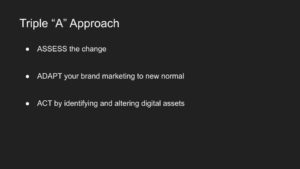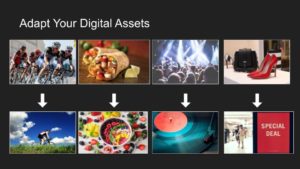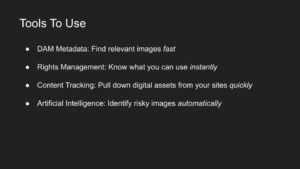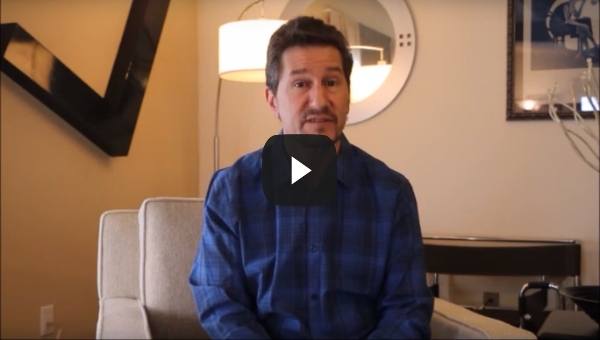
Maintaining Brand Positivity in Challenging Times
During challenging times, our normal routines can be interrupted. Our priorities might shift. Our plans may change direction. The more widespread the adversity, the more pronounced the impact on society can be. When people are faced with broad societal changes, they are forced to adjust their behavior and adapt their lives to the new normal. People react to the changing world and the world changes as a result.
For brands and companies that sell goods and services, the new landscape can be a real challenge. With a large percentage of the world on lockdown or practicing social distancing, the entire landscape has changed.
Working now means commuting down the hallway to your home office and figuring out how to use video meetings and collaboration tools.
Shopping now means contactless delivery or braving a trip to the grocery store and trying to avoid others. The stock market is way down. Unemployment claims are way up. For some brands that market goods and services to consumers, this changing landscape can mean shuttered stores, reduced sales and maybe even layoffs or bankruptcy. For others, the current environment might actually represent an opportunity.
This video and article take a closer look at how you might adjust marketing strategies and content to best represent your brand and maintain a positive brand image in the current climate.
How to Build Positive Brand Perception
As a digital marketer, your number one goal is to represent your brand positively through your content and marketing campaigns. In times like this, positive brand perception is more critical than ever, and it is important to understand how the current crisis might affect your brand and how your digital assets and marketing are being perceived by your customers. Like everyone else, your brand will most likely have to adapt to what’s happening. To do this, you’ll need to assess the changes that are occurring, adapt your brand marketing and alter your digital assets.
 When the landscape is changing rapidly, it helps to use a AAA approach – Assess, Adapt and Act. Assess the change. Adapt your brand to the new normal. And Act to change your digital assets and marketing content.
When the landscape is changing rapidly, it helps to use a AAA approach – Assess, Adapt and Act. Assess the change. Adapt your brand to the new normal. And Act to change your digital assets and marketing content.
Let’s look more closely at the current crisis and see how you can employ these tactics to adapt your digital assets and help you maintain a positive brand image in challenging times. Start by assessing the change. Compare the norms of the past to the current trends. Be alert to the trends that these new norms will result in.
- Social distancing means less activity with others.
- A focus on personal health is going to lead to healthier lifestyles.
- Sheltering in place means working from home which could result in loneliness or boredom.
- Economic downturns tend to make people worry about spending money.
Adapting your Brand Marketing Content and Digital Assets
Now adapt your marketing strategy to address any risks or liabilities to your brand based on these trends. Does your brand involve sports or group activities? Do your products contribute to personal lifestyle? For example food or beverage. Do you have an entertainment or outdoor-related brand? Do you offer luxury items or other expensive products?

If your brand is at risk, you will need to adapt your marketing campaigns and digital assets to these trends:
- Change the focus from groups to more singular activities
- Change messaging from potentially unhealthy options to more healthy ones
- Change environments from the outdoors to indoors or online
- Change price points to create sales or specials
How you adapt your marketing and digital assets to the current landscape will determine how your brand is perceived, whether you can maintain a positive brand image, and ultimately if you can weather the storm or not. Based on your assessment of the trends, you can decide on a course of action.
Evaluating your Course of Action to Maintain a Positive Brand Image
To determine where to start, ask yourself a few more questions:
- How likely is your brand’s perception to be impacted? For some brands the impact can be major. For others, it may not be. Figuring out your liability will help you know how quickly you need to act
- Which of the changes most affects your demographic audience? This will help you figure out which digital assets to focus on by addressing specific age groups or audiences, such as the elderly or young children.
- How big an impact is the visual nature of your brand? Are your brand assets centered around changing trends like eating out? This will help you figure out the scope of digital assets you need to worry about.
- What will still work and what needs to change? Some of your assets may remain useful even in the context of a new landscape. For example, a picture of an empty restaurant might still be okay. This will help you find digital assets you can use while you identify which ones need to be immediately removed or altered.
Once you have Assessed the challenge, Adapted the brand and determined how to Act, you will need specific tools and methods to help find the digital assets that are affected and alter them or restrict them from use.
Marketing Technology and Concepts to Support Speed-to-Change
DAM metadata can enable you to find relevant images. This is a great reason to make sure you have good metadata. If you can find digital assets by searching for “group” or “sports” or “individual” you can quickly identify usable assets or those that you need to restrict immediately.
Digital Rights Management tells you which digital assets you can use. You may have to rapidly publish previously unused images, or create new composite assets using various rights managed content. By having usage rights available you won’t be slowed down with legal checks when time is of the essence.
tells you which digital assets you can use. You may have to rapidly publish previously unused images, or create new composite assets using various rights managed content. By having usage rights available you won’t be slowed down with legal checks when time is of the essence.
Content Tracking helps you remove questionable content from your sites. Software that combines website crawling, image matching and video recognition can help you find and remove specific images or videos that were published on the internet and on social media.
Finally, Artificial Intelligence can identify other risky images. Object identification, celebrity recognition and other AI-based tools can be deployed to further identify images that you may need to worry about.
| “The secret of change is to focus all of your energy, not on fighting the old, but on building the new.” – Socrates |
Building for the Future
Now that you’ve taken action to protect and maintain your positive brand image in the midst of a crisis, you can go a step further and begin to think about how you build for the future.
- Are there new opportunities? In most crises, there is opportunity for growth if your brand is positioned correctly.
- Is your company able to help with the situation? Can you assist people by providing outreach, community resources or other aid?
- Is your product an essential need? Do you offer products or services which have become necessary during and/or after the crisis?
- How can your brand continue to be successful? Can you adjust your sales and marketing to make it
enticing enough for people to continue buying and using your products in the future?

The answer to all of these questions lies in adapting the messaging in your digital assets to make the most of the situation. Maybe that means increasing your use of marketing content and advertising, or maybe it means pulling it back.
But the companies that do well during challenging times are the ones that are able to adapt quickly and create specific digital assets and marketing campaigns that keep their brands in a positive light. How your brand manages its digital assets during challenging times will determine how well you survive them. So whatever challenge your brand faces and whatever changes come about in our uncertain world, remember to use the AAA approach. Asses the changes. Adapt your brand. And Act by changing your assets and repositioning your content.











